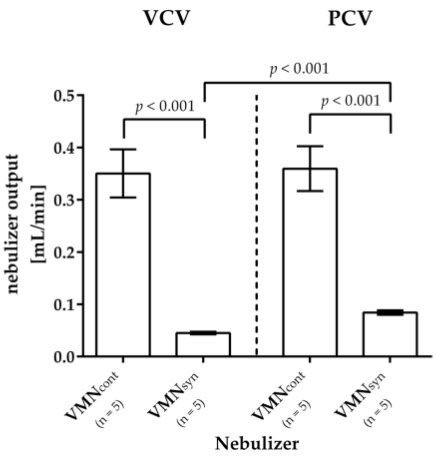Introduction
Acute respiratory distress syndrome (ARDS) is a severe lung condition that can lead to respiratory failure. Inhaled iloprost, a prostacyclin analogue, is a treatment for ARDS that can help to improve lung function. However, the short half-life of iloprost means that it must be administered frequently, which can be inconvenient for patients and caregivers.
Inspiration-synchronized nebulization (ISN) is a method of delivering inhaled medication that is synchronized with the patient's breathing cycle. This can help to improve drug delivery to the lungs and reduce side effects.
In a recent study, researchers compared the use of ISN with continuous nebulization (CN) for the delivery of inhaled iloprost to mechanically ventilated patients. The study found that ISN was more effective than CN at delivering iloprost to the lungs and that it could be used to deliver iloprost for a longer period of time.
Methods
The study was an in vitro model that used a test lung to simulate the human lung. The test lung was connected to a ventilator that was set to either volume-controlled ventilation (VC-CMV) or pressure-controlled ventilation (PC-CMV) mode. Two types of nebulizers were used: an inspiration-synchronized vibrating mesh nebulizer (VMNsyn) and a continuous vibrating mesh nebulizer (VMNcont).

VMNcont:continuous vibrating mesh nebulizer
VMNsyn:inspiration-synchronized vibrating mesh nebulizers
The researchers measured the aerosol output of the nebulizers and the nebulization time. They also compared the deposition of iloprost in the test lung with the two nebulization methods.
Results
The aerosol output of the VMNsyn was significantly lower than the aerosol output of the VMNcont for both ventilation modes. However, the nebulization time of the VMNsyn was significantly longer than the nebulization time of the VMNcont. This resulted in a similar total amount of iloprost being delivered by the two nebulizers.

Iloprost deposition rate. The deposition rates of the two nebulizers during VC-CMV showed no significant differences, while during PC-CMV, the VMNsyn reached a significantly lower deposition rate. During VC-CMV, the iloprost deposition rate of the inspiration-synchronized VMN (VMNsyn) was higher than during PC-CMV, however without being statistically significant (p = 0.05). The deposition rate of the continuous VMN (VMNcont) also did not differ between the two ventilation modes.
Discussion
The results of this study suggest that ISN is a more effective method of delivering inhaled iloprost to mechanically ventilated patients than CN. ISN can deliver iloprost for a longer period of time and results in a higher deposition of iloprost in the lungs.
These findings may have implications for the treatment of ARDS. ISN could be used to deliver inhaled iloprost to patients with ARDS for a longer period of time, which could improve patient outcomes.
Conclusion
Inspiration-synchronized nebulization during VC-CMV mode seems to be the most suitable for prolonged inhalative iloprost administration in mechanically ventilated patients.
Additional points
The study was conducted in an in vitro model, so the results may not be directly applicable to clinical practice.More research is needed to confirm the efficacy of ISN in the treatment of ARDS.
Reference
Otto, M.; Kropp, Y.; Jäger, E.; Neumaier, M.; Thiel, M.; Quintel, M.; Tsagogiorgas, C. The Use of an Inspiration-Synchronized Vibrating Mesh Nebulizer for Prolonged Inhalative Iloprost Administration in Mechanically Ventilated Patients—An In Vitro Model. Pharmaceutics 2023, 15, 2080.